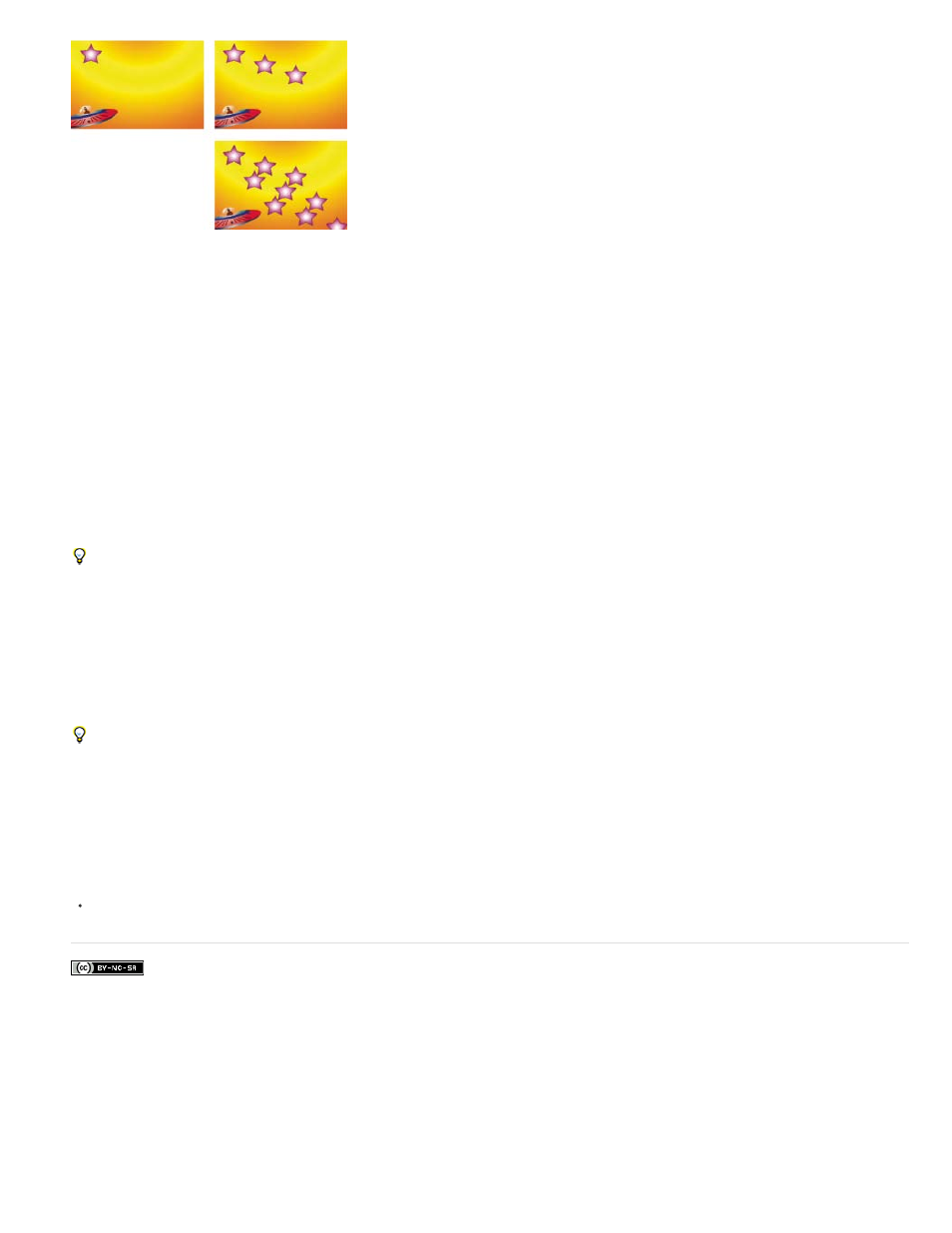Adobe After Effects User Manual
Page 346

Facebook posts are not covered under the terms of Creative Commons.
Original shape (upper-left), one instance of the Repeater operation applied (upper-right), and two instances of the Repeater operation applied
(lower-right)
If the original shape is numbered 0, the next copy is numbered 1, and so on, then the result of the Repeater is to apply each transformation in the
Transform property group n times to copy number n.
Consider the example of the Repeater applied to a shape with the Copies value set to 10 and the Position property in the Transform property
group for the Repeater set to (0.0, 8.0). The original shape remains in its original position, (0.0, 0.0). The first copy appears at (0.0, 8.0), the
second copy appears at (0.0, 16.0), the third copy appears at (0.0, 24.0), and so on, until the ninth copy at (0.0, 72.0), for a total of ten shapes.
You can apply multiple instances of the Repeater within the same group. In other words, you can repeat the Repeater. Using multiple instances of
the Repeater is an easy way to create a grid of virtual copies of a single shape: just set the Position property for one instance of the Repeater to
modify the horizontal values, and another instance to modify vertical values.
The Offset property value is used to offset the transformations by a specific number of copies. For example, if the Copies value is 10 and the
Offset value is 3, then the original shape is transformed by 3 times the amount specified in the Transform property group, and the last copy is
transformed by 12 times the amount specified in the Transform property group.
Animating the Offset property is a good way to easily create interesting results.
The Composite option determines whether copies are rendered above (in front of) or below (behind) the copies that precede them.
Use the Start Opacity value to set the opacity of the original shape, and the End Opacity value to set the opacity for the last copy. Opacity values
for copies in between are interpolated.
If you place the Repeater after a path, above the fill and stroke property groups for a shape, then the set of virtual copies is filled or stroked as a
compound path. If you leave the Repeater below the fill and stroke, then each copy is filled and stroked individually. The difference is most
apparent with gradient fills and strokes.
Add a Wiggle Transform path operation after a Repeater operation to randomize (wiggle) the position, scale, anchor point, or rotation of the
repeated copies within an instance of the Repeater. If the Wiggle Transform path operation precedes (is above) the Repeater path operation,
then all of the repeated shapes will be wiggled (randomized) in the same way. If the Repeater path operation precedes (is above) the Wiggle
Transform path operation, then each of the repeated shapes will be wiggled (randomized) independently.
Eran Stern provides a video tutorial on the
that shows how to use the Repeater operation.
Chris Zwar provides an example project on
uses the Card Dance effect and a shape layer with the Repeater operation to simulate
a halftone color separation for any image or video.
342
